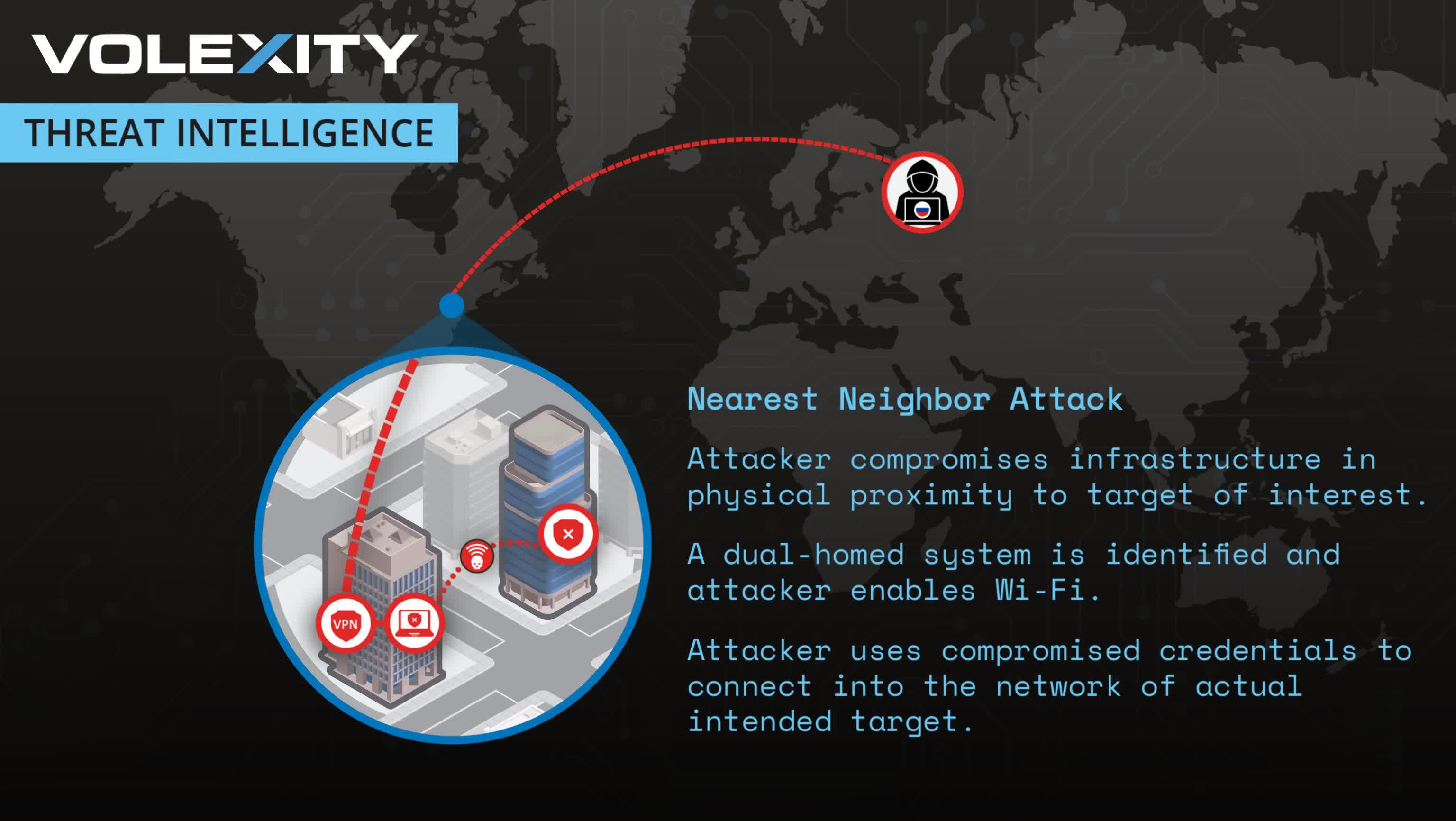In context: A brand new hacking method raises considerations about how cyber warfare and espionage proceed to evolve. As nation-state actors develop extra subtle strategies, the road between bodily and digital safety turns into more and more blurred.
Russian hackers have devised a extremely subtle technique of breaching Wi-Fi networks from afar that researchers have dubbed the “nearest neighbor assault,” because it permits hackers to infiltrate goal networks with out bodily approaching the premises.
The brand new method entails a multi-step course of that leverages vulnerabilities in neighboring networks to breach the meant goal. As a substitute of risking detection by getting near the goal, as has been the norm in earlier Wi-Fi hacking makes an attempt, hackers can now orchestrate their assaults from a secure distance.
Cybersecurity agency Volexity uncovered this unprecedented Wi-Fi hacking method whereas investigating a community breach focusing on a buyer in Washington, DC, in 2022. The agency’s researchers traced the intrusion to a Russian hacker group recognized by numerous monikers, together with Fancy Bear, APT28, and Unit 26165, a part of Russia’s GRU army intelligence company.
Wired notes that cybersecurity researcher Steven Adair revealed how his agency found this system on the Cyberwarcon safety convention held this week in Arlington, Virginia.
A “nearest neighbor assault” operates via a sequence of calculated steps. Hackers first breach a susceptible community in a constructing close to the meant goal. They then acquire management of a laptop computer inside this compromised community. They use the system’s Wi-Fi from there to breach the focused community. This technique permits the attackers to stay bodily distant whereas exploiting native Wi-Fi vulnerabilities.
Within the case investigated by Volexity, the assault’s sophistication prolonged past a single leap. The researchers found proof of a daisy chain of Wi-Fi community breaches that concerned as much as three separate networks earlier than reaching the ultimate goal. The assault’s success hinged on a number of technical components, together with credential exploitation, two-factor authentication bypass, and area identify leakage. The hackers have been very decided, in response to Volexity, making a number of intrusion makes an attempt even after preliminary discovery.
This system is an evolution of the GRU’s earlier “close-access” hacking strategies. In 2018, officers caught Russian spies making an attempt to hack the Wi-Fi community of the Group for the Prohibition of Chemical Weapons in The Hague utilizing tools hidden in a automotive trunk. The “nearest neighbor assault” appears to immediately reply to the operational safety dangers uncovered by that incident.

This new assault vector presents important challenges for cybersecurity professionals. Organizations should now contemplate the safety of neighboring networks as a part of their menace panorama. The power to conduct these assaults from afar will increase the potential pool of attackers and complicates figuring out who’s behind an assault.
In gentle of this new menace, cybersecurity specialists suggest a number of protecting measures, together with limiting Wi-Fi vary, obfuscating community names, implementing extra sturdy authentication protocols, and monitoring Wi-Fi entry factors, particularly these close to home windows or exterior partitions.
Cybersecurity specialists warn that nearest-neighbor assaults might turn into extra prevalent. John Hultquist, a menace intelligence skilled at Google-owned Mandiant, means that this system represents a “main enchancment” for close-access operations, and hackers are seemingly to make use of it extra incessantly.
Picture credit score: Volexity



